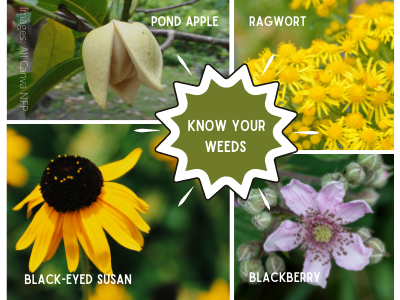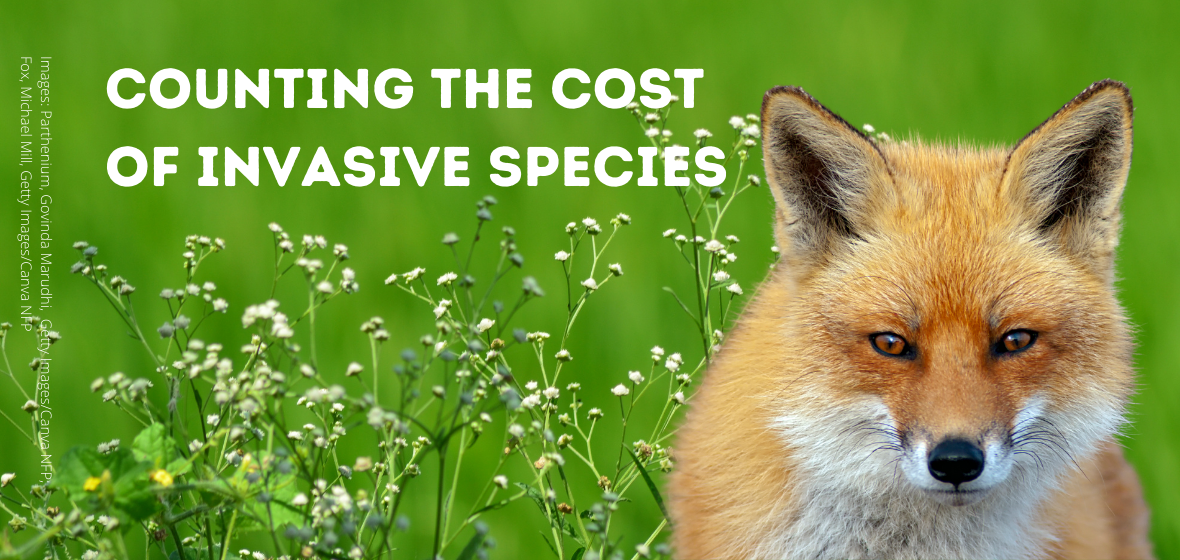10 August 2021
A new study by Flinders University and the ARC Centre of Excellence for Australian Biodiversity and Heritage estimates the economic impact of trying to halt the feral invasion in Australia and shows just how costly weeds can be.
It is no secret that invasive, or feral, species have had a catastrophic effect on biodiversity all across this continent. The decline in native mammals over the past 200 years, particularly small- to medium-sized mammals within the ‘critical weight range’, can largely be attributed to feral carnivores such as the feral cat and red fox. Add to that environmental degradation caused by feral hoofed stock—pigs, goats, camels, brumbies and donkeys—and invasion is undoubtedly the most significant extinction threat to our native flora and fauna.
The true cost of ferals
Drawing on data from InvaCost and other datasets that measure invasive herbivores, plants, and disease-causing agents, a recent study published in NeoBiota estimated the total costs of managing invasive species over the past six decades at AUD 389.59 billion.
Unsurprisingly, the costliest culprits at a species level were feral cats (Felis catus), rabbits (Oryctolagus cuniculus) and red fire ants (Solenopsis invicta.
Dubious inclusions on the list of ‘pests’ were irruptive, and occasionally disruptive, native mammals such as kangaroos, koalas, and wombats. Combined, these species were found to account for just 2.4% to 3% of the total expenditure, with that almost wholly attributed to kangaroos, which are well-managed by existing protocols.
Wildlife Queensland recognises the need to manage populations of native species that have been introduced outside of their historical range or in cases where rapid population increases result in environmental damage; however, the inclusion of native species as pests minimises the fact that wombats and koalas are themselves adversely affected by introduced invasive carnivores and feral competitors and may be at risk elsewhere within their range.
The relatively low economic cost caused by these species is reflected by an equally minimal environmental cost when compared with alien or invasive species. A 2019 study analysed 1,500 extinct species from around the globe listed on the IUCN Red List and found ‘no evidence for native species being the sole driver of extinction of other natives in any case’. Invasive species were determined to be a contributing cause of 33% of animal extinctions. In contrast, fewer than 3% of animal extinctions implicated another native species, and only 5% of plant extinctions were found to have been affected by other native species.
Great as the economic impact of invasive species is, Wildlife Queensland recognises that the actual cost of invasive species has been to Australia’s biodiversity. The ultimate price has been paid by now-extinct fauna, such as the pig-footed bandicoot, thylacine, lesser bilby, and more.
Weeding out invasive plants
It isn’t just our fauna being forced to compete with non-natives. Australian flora is fighting a losing battle with weeds.
Of this continent’s 3,200 plus introduced plant species that have become naturalised, some 500 taxa are considered noxious or are subject to legislative control. Perhaps unsurprisingly, trying to stem this floral invasion was the most expensive exercise of all, putting us $204 billion out of pocket over the past sixty years, according to the recent study.
Parthenium (Parthenium hysterophorus), ragwort (Senecio jacobaea), and ryegrass (Lolium rigidum) were the worst offenders, proving the most expensive to control.
Weeds displace native flora and alter the structure and composition of terrestrial and aquatic ecosystems. Many also encourage insect pests or spread imported diseases. Prolific weeds can also increase the biomass of certain habitats, resulting in more intense bushfires.
Not winning against WoNS
 Australia lists 37 plant species as Weeds of National Significance, or WoNS; among them are escaped orchard plants such as European blackberries (Rubus fruticosus), which have usurped some 9 million hectares in Australia’s south, and pond apple (Annona glabra).
Australia lists 37 plant species as Weeds of National Significance, or WoNS; among them are escaped orchard plants such as European blackberries (Rubus fruticosus), which have usurped some 9 million hectares in Australia’s south, and pond apple (Annona glabra).
Blackberry thickets ramble out of control, creating fire hazards and preventing the germination of native seeds, while pond apples, which were first introduced to graft custard apples, aggressively invade freshwater and brackish waterways, wetlands, and coastal habitats in north Queensland.
Queensland’s Biosecurity Act 2014 also lists 90 weed species as prohibited or restricted invasive plants. Many were introduced and sold as garden varieties or ornamentals, such as black-eyed Susan (Thunbergia alata) and blue mist (Bartlettina sordida). Often, home gardeners remain unaware that their backyard blooms are invasive species.
How you can help stop the spread of weeds
Under Queensland’s Biosecurity Act 2014, we all have an obligation to minimise the spread of invasive species. You can help by:
- educating yourself about the major weed species in your region and well-known garden ‘escapees’.
- remembering that birds, nectarivores and even strong winds or floods can move weeds 20–30 km from your garden or pond and into local habitats and waterways.
- never importing plants, bulbs or materials containing soil from overseas and always following Australian Government import restrictions.
- understanding that over-fertilisation promotes weed growth, and preventing water and fertiliser run-off into bushland or waterways.
- responsibly dumping any weeds and garden waste at your local waste disposal facility.
- recognising that some weeds can survive composting/mulching unless it reaches 55oC for three consecutive days. For more information on preparing compost and mulch, see Australian Standard 4454-2012 Composts, Soil Conditioners and Mulches.
- brushing down dogs and horses (and cleaning their feet) to remove any seeds or vegetation after travelling through a property that contains weeds.
- staying on designated tracks and trails as much as possible when driving or hiking through weed-infested areas.
- making use of washdown facilities to clean your equipment, boots or vehicles, paying particular attention to the undercarriage and tyres.
- getting involved with your local Wildlife Queensland branch or local government area programs to revegetate habitats and contain the spread of weeds.
Spending to save
The economic costs of controlling invasive species in Australia are substantial, making it even more imperative that we have robust biosecurity laws to prevent future alien arrivals.
Wildlife Queensland continues to urge state and federal government to invest in arresting the threat of invasive plants and animals. After all, funding the ongoing conservation of Australia’s threatened species and safeguarding our biodiversity is not a cost but rather an investment in the future of our wildlife and wild places.
Related articles and information:
- Australia’s floral extinction crisis
- Biosecurity back in focus
- Eradication planned for the red imported fire ant

